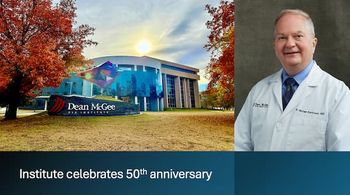
Pro-drug mechanism of action provides improved comfort, effective healing
Identifying and prescribing the optimum non-steroidal anti-inflammatory drug (NSAID) to help patients get the best possible LASEK result is a crucial part of the surgical treatment plan. Likewise, postoperative non-compliance can weaken the outcome of an otherwise perfect procedure.
Identifying and prescribing the optimum non-steroidal anti-inflammatory drug (NSAID) to help patients get the best possible LASEK result is a crucial part of the surgical treatment plan. Likewise, postoperative non-compliance can weaken the outcome of an otherwise perfect procedure.
After hearing several LASEK patients say that they did not follow through with their prescribed postoperative regimen of ketorolac tromethamine ophthalmic solution 0.4% (Acular LS, Allergan) because of a burning sensation associated with it, I decided to do a double-masked, head-to-head comparison of two very different NSAIDS: the new pro-drug nepafenac ophthalmic suspension 0.1% (Nevanac, Alcon Laboratories) and ketorolac. Having had positive results using nepafenac for cataract surgery, corneal abrasions (including my own), and foreign bodies, it stood to reason that I should expect similar results in my patients who were undergoing surface ablation.
Clinical studies
The small study of simple design revealed big news. The healing process was the same in each group. There was no difference in the re-epithelialization rate of the nepafenac-treated eyes in comparison with the ketorolac-treated eyes, nor was there any difference in the rate with which the patients regained vision in either eye.
These results are consistent with an extensive, 80-eye study of epithelial wound healing and pain/comfort after PRK by Eric Donnenfeld, MD, Daniel Durrie, MD, Michael Raizman, MD, and Edward Holland, MD, in which epithelial healing times were found to be equivalent between nepafenac and ketorolac.
There was a distinct difference, however, in the patients' general response to the different NSAIDs. All of the patients found the nepafenac eye to be comfortable, but complained of a burning sensation in the ketorolac eye. This, too, was a result equivalent to the PRK study aforementioned. Nepafenac demonstrated an advantage in terms of pain control, less burning, and stinging-with greater comfort.
In addition, another study was done by Matthew Caldwell, MD, and Charles Reilly, MD (United States Air Force, Wilford Hall Warfighter Laser Center, San Antonio, TX), that compared nepafenac with balanced salt solution (n = 122 eyes), and found no differences in wound healing, and an advantage in terms of pain control with nepafenac. Dosing was t.i.d. × 2 days. There was no difference in epithelial healing times at all time points, postoperative days 1 to 4, and all eyes healed by day 4.
The larger studies similar to this one help me attribute more than anecdotal significance to these findings. However, even the study's limited size does not detract from the major compliance implications. Human nature dictates that patients are simply more likely to continue using a topical drop that is comfortable.
Other studies
Larger studies also point to nepafenac's comfort level as well as its safety and efficacy. The clinical studies that preceded the FDA's acceptance of Alcon's new drug application for nepafenac indicated that when the drug was dosed three times per day, in the absence of steroid therapy, it was effective in controlling pain and postoperative inflammation associated with cataract surgery.
More than 80% of patients treated with nepafenac suspension were pain-free on day 1, compared with only 40% to 50% in the placebo group. By day 14, approximately 95% of patients were pain-free when treated with the drug, compared with 45% to 60% of patients in the placebo group.
Results for inflammation control were similarly positive, because greater than 85% of patients treated with nepafenac suspension had no clinically significant inflammation at day 14, compared with approximately 49% of patients in the placebo group. Both groups used no steroids. These efficacy measurements of inflammation and pain were statistically significant. Nepafenac suspension was safe and well tolerated in both clinical studies.
Newsletter
Don’t miss out—get Ophthalmology Times updates on the latest clinical advancements and expert interviews, straight to your inbox.


















































.png)


